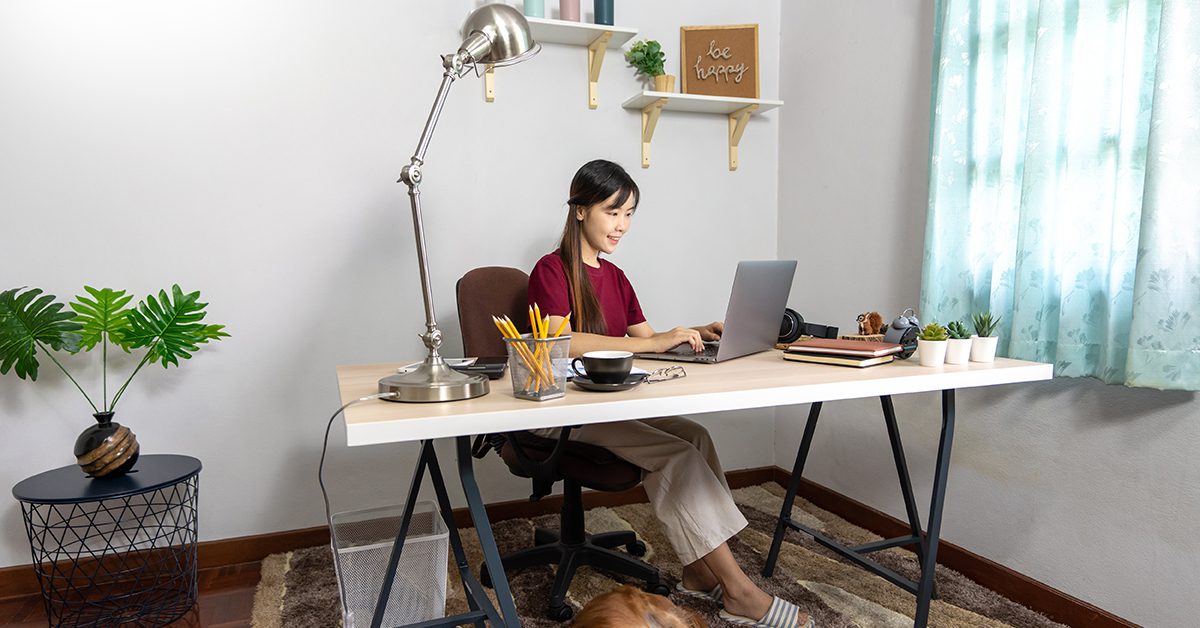
It’s essential to periodically review your home workstation and ensure you’re set up for success moving into the new year. Since you spend several hours at your workspace, it should support your work responsibilities and be arranged in a way that helps you avoid injuries. This article discusses the importance of ergonomics and home workstation best practices.
Ergonomics Still Matter
Ergonomics is the science of fitting a workspace to your needs and aims to increase efficiency while reducing discomfort and the likelihood of injury. With more people working from home and other remote locations, ergonomics remain critical to the workday. And fortunately, you’re more in control of workspace ergonomics in your own home versus an office.
”Poor workstation ergonomics can lead to reduced productivity and several musculoskeletal disorders (MSDs) that may have long-lasting effects, such as head or neck strain and damage to muscles, nerves, blood vessels, ligaments and tendons.
While completing a nonergonomic motion may feel natural or safe for the short term, repetitive or prolonged use of an unhealthy body movement can lead to long-term injuries and strains.
Remote Workstation Review
Risk factors for work-related MSDs include awkward postures, repetition and inadequate lighting. General ergonomics best practices can help you avoid these risks. Review your home workstation setup to ensure it’s still promoting a healthy workday:
- Chair—Chairs should support your spine’s curvature and adjust so your feet can rest flat on the floor and your thighs are parallel to it. If the chair is too high, consider using a footrest or household
- Desk—Your work surface should have space underneath for your legs and feet without your knees banging on the If it’s too low, adjust your chair or work surface accordingly.
- Monitor—Arrange your laptop or monitor(s) directly in front of you and about an arm’s length The top of the screen(s) should be at or slightly below eye level.
- Keyboard and mouse—When using a keyboard and mouse, keep them on the same Ideally, a flat keyboard is better than a tilted one. Position your arms so that your wrists can be straight, with your arms at elbow level.
- Phone—If you’re spending much time on phone calls or in meetings, a headset or speakerphone can reduce the need to frequently hold up the phone or press it up against your
- Lighting—A mix of natural and artificial light can reduce the risk of eye strain and Glare can also strain your eyes, so position the monitor in a way that reduces or eliminates glare.
- File storage—Organize your files and materials so you’re not frequently bending and straining to access
As you find yourself working from home for a prolonged time, taking small steps can go a long way toward working more productively and preventing ergonomic injuries. Keep ergonomics in mind and make your workstation work for you.
© 2022 Zywave, Inc. All rights reserved.
